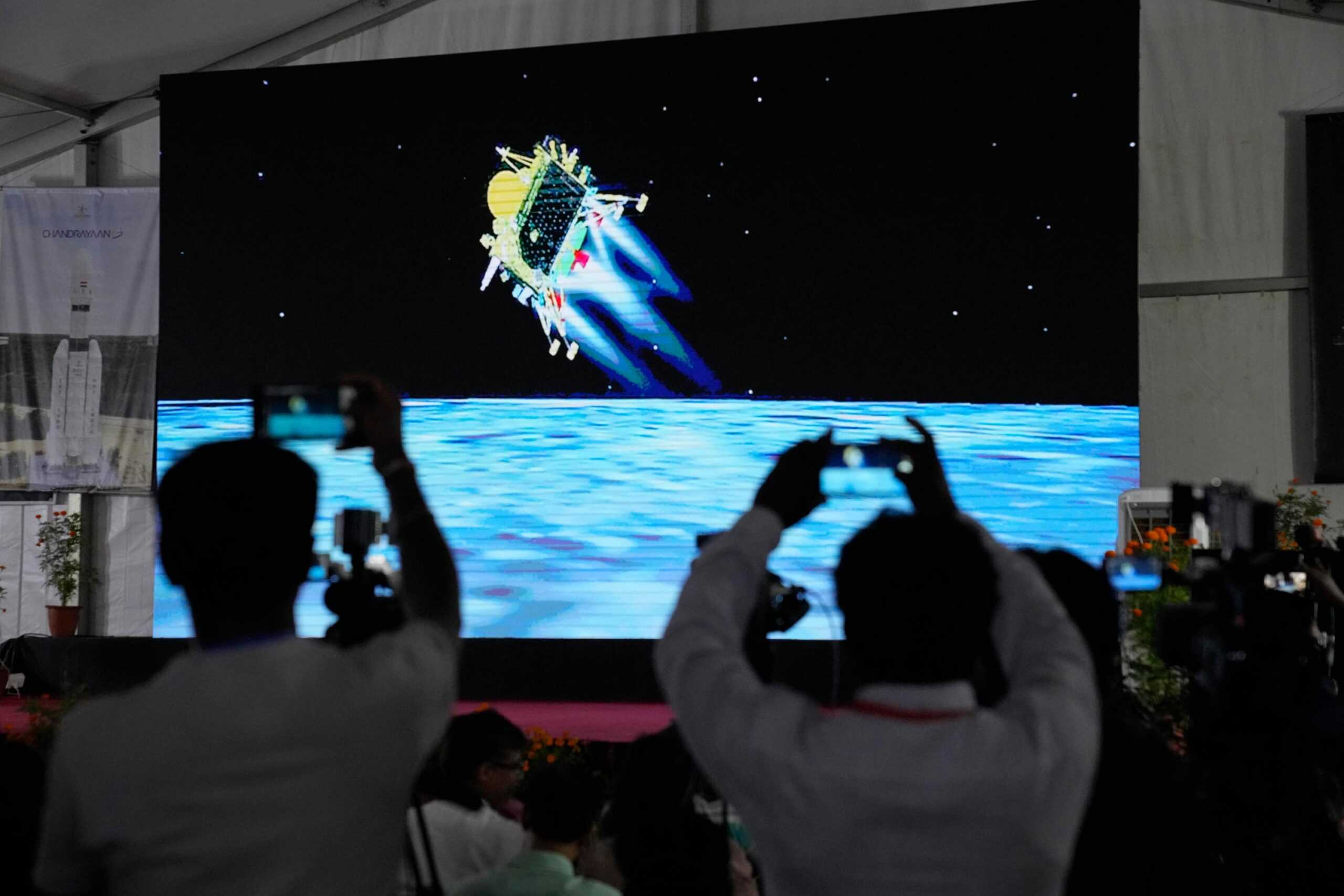
India has successfully landed a spacecraft near the Moon’s south pole, uncharted territory that scientists believe could hold vital reserves of frozen water and precious elements, as the country cements its growing prowess in space and technology.
As the Chandrayaan-3 lander with a rover inside touched down on the lunar surface, cheers and applause erupted among the space scientists watching in the southern Indian city of Bengaluru.
After a failed attempt nearly four years ago, India made history by becoming the first country to touch down near the little-explored south pole region and joins the United States, the Soviet Union and China in achieving a Moon landing.
India’s successful landing comes just days after Russia’s Luna-25, which was aiming for the same lunar region, spun into an uncontrolled orbit and crashed.
It would have been the first successful Russian lunar landing after a gap of 47 years.
Russia’s head of the state-controlled space corporation Roscosmos attributed the failure to the lack of expertise due to the long break in lunar research that followed the last Soviet mission to the Moon in 1976.
Excited and anxious, people across India, home to the world’s largest population, crowded around televisions in offices, shops, restaurants and homes.
Thousands had prayed on Tuesday for the success of the mission, with oil lamps on river banks, temples and religious places, including the holy city of Varanasi in northern India.
Prime Minister Narendra Modi was seen on a livestream broadcast into the Indian Space Research Organisation’s control room, smiling and waving an Indian flag as Chandrayaan-3 landed.
“India is now on the Moon,” he said.